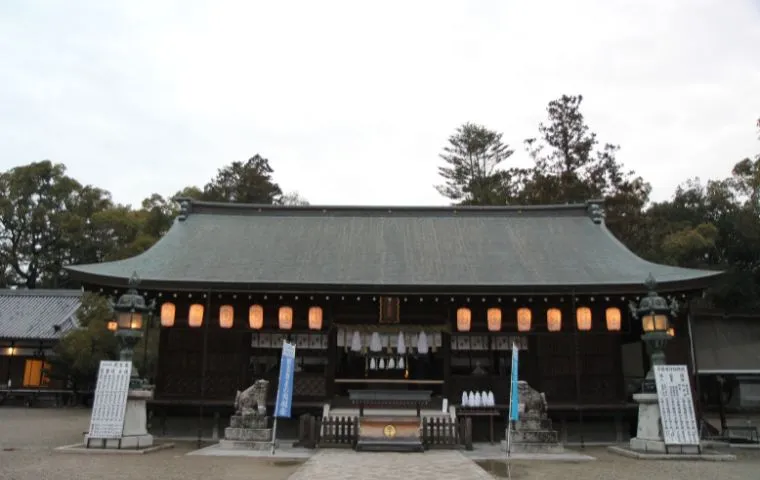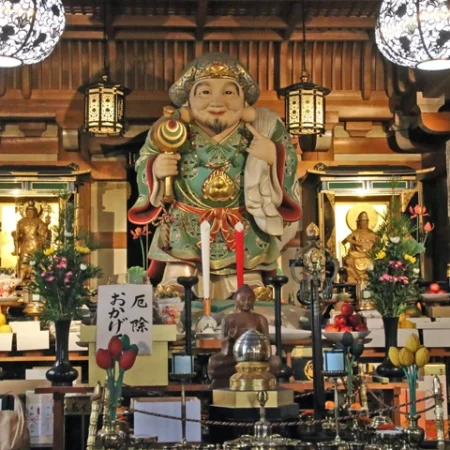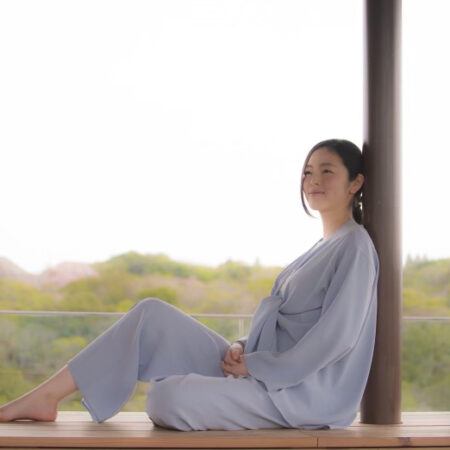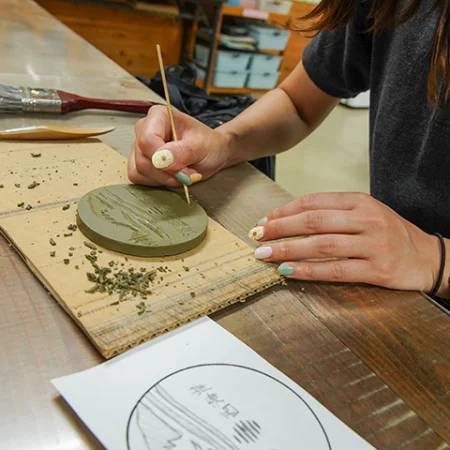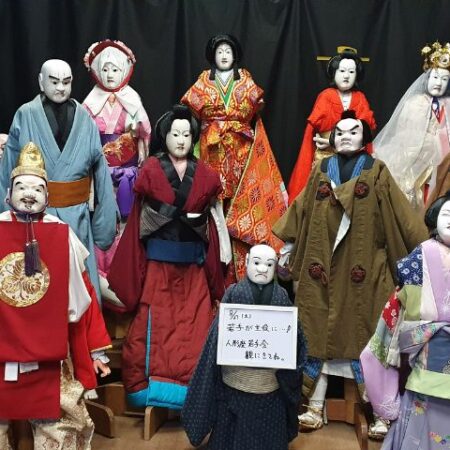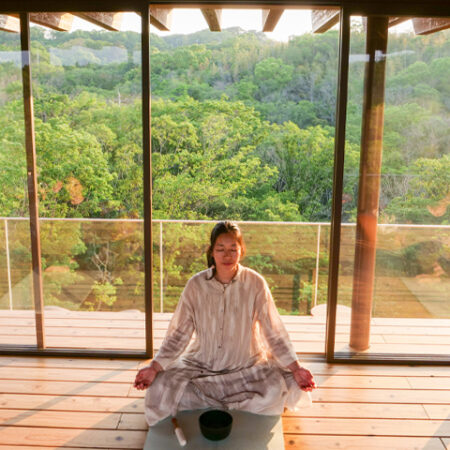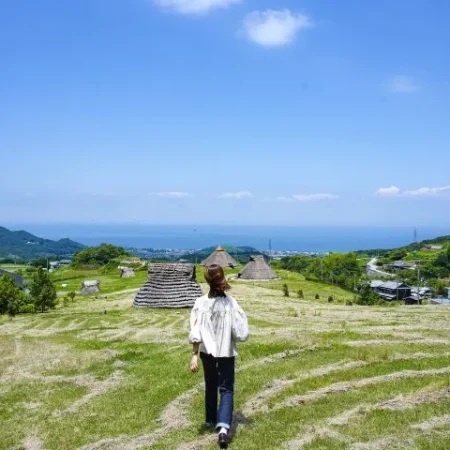A team of foreign fellows of Awaji Youth Federation had a unique experience of receiving a Shinto blessing at Izanagi Jingu, one of the oldest shrines in the whole of Japan, for the first time in living memory.
Table of Contents
Origin of Awaji Island: the Gods Izanagi and Izanami
According to Japanese ancient literature (the Kojiki 古事記 and Nihon Shoki 日本書紀) the male and female deities, Izanagi and Izanami, who became husband and wife, gave birth to the islands of Japan. The first one they created was Awaji Island. On the island, there are many places related to the creation myth, but the most important one in my opinion is Izanagi Jingu. It is said to be among the oldest Shinto shrines in Japan and the place where the god Izanagi no Mikoto spent the rest of his life after completing all his godly duties.
The Sacred Tree (shinboku 神木)
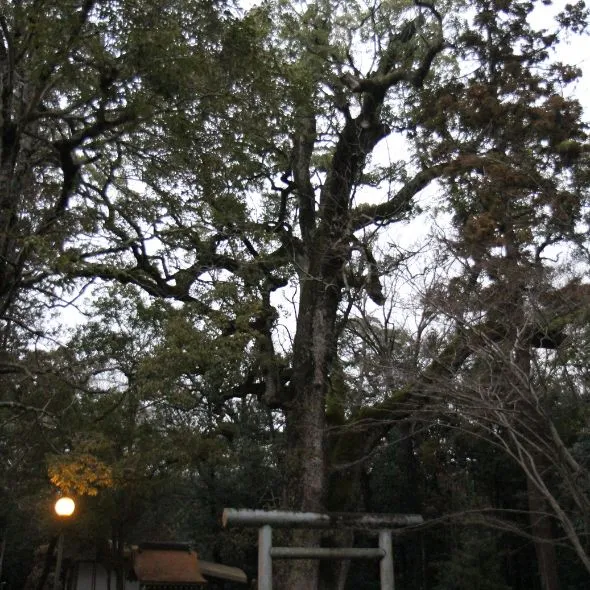
One can also find an over 900-year-old sacred tree inside Izanagi Jingu called Meoto-ookusu (夫婦大楠). It began life as two separate trees that eventually joined together as one. Walking around the two entwined trees makes one realize how small and insignificant we as humans are. The tree has survived many centuries and will continue to grow even after we’ve gone. This kind of ideology makes one realize why nature is so respected in Shintoism.
Meoto-ookusu (夫婦大楠)’s literal meaning is “the husband-and-wife giant camphor tree”. One of the fused trees is considered male and the other female, hence the husband-and-wife name. This tree that resembles two people embracing, is popular among visitors who come to pray for a good marriage, good relationship, healthy pregnancy, and smooth childbirth. In my opinion, this would be a very romantic place to visit with your partner to pray for anything related to relationships and marriage.
Receiving a Shinto Blessing
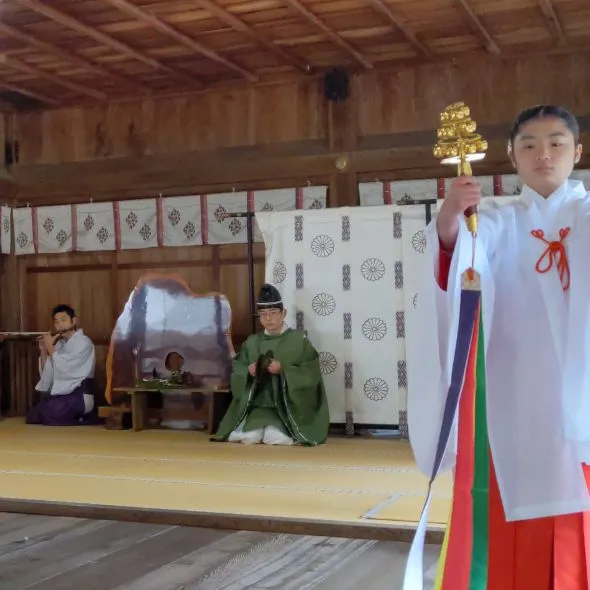
It was cold and windy when we arrived at Izanagi Jingu for the experience of receiving a traditional Shinto blessing. Our group was instructed to wash our hands in the temizuya (手水舎) purification fountain before stepping through the shrine’s tamagaki (玉垣) sacred fence. The idea is to purify yourself and your soul before entering the sacred grounds. The priest welcomed us and guided us to the worship hall haiden (拝殿), which is a building with a roof but no real walls, so even “inside” feels like outside. By the time we’d taken our shoes off, we were already shivering from the winter wind, but we were soon seated on warm electric blankets on top of the tatami in the haiden, which helped a lot.

After a few welcoming words, the ceremony began. Having the least Japanese knowledge in our group, I barely understood anything from the songs or sacred words, but still it was interesting to watch and enjoy. At one point, two shrine priestesses, miko (御子), performed a synchronized dance in front of us while one of the men played taiko drum and another a flute. The miko had suzu (鈴) bells with them which they chimed perfectly in time with the song and dancing. The whole thing was mesmerizing and beautiful.
After the initial part came the actual blessing, where three of us were handed tamagushi (玉串), a branch of the sakaki tree wrapped with shide (紙垂), sacred white paper. Only the three of us with the tamagushi got to enter the most sacred part of the shrine, the honden (本殿), where the god is believed to be enshrined. There we offered the sakaki tree branches to the god with a bow and exited the sacred home of the god by once again bowing.
Even though some of the blessings and ritual parts were lost on me due to the language barrier, I very much enjoyed the experience. It was unique and magnificent, and I believe many who do not have much knowledge about Shintoism or Japanese language would enjoy it as well.

In my opinion, Izanagi Jingu perfectly combines a culturally rich spiritual experience with a sense of rustic, cozy intimacy. Anyone can visit the shrine to learn more about Shintoism and Japanese spirituality.
Facility Name: Izanagi Jingu Shrine
Location: 740 Taga, Awaji, Hyogo 656-1521



